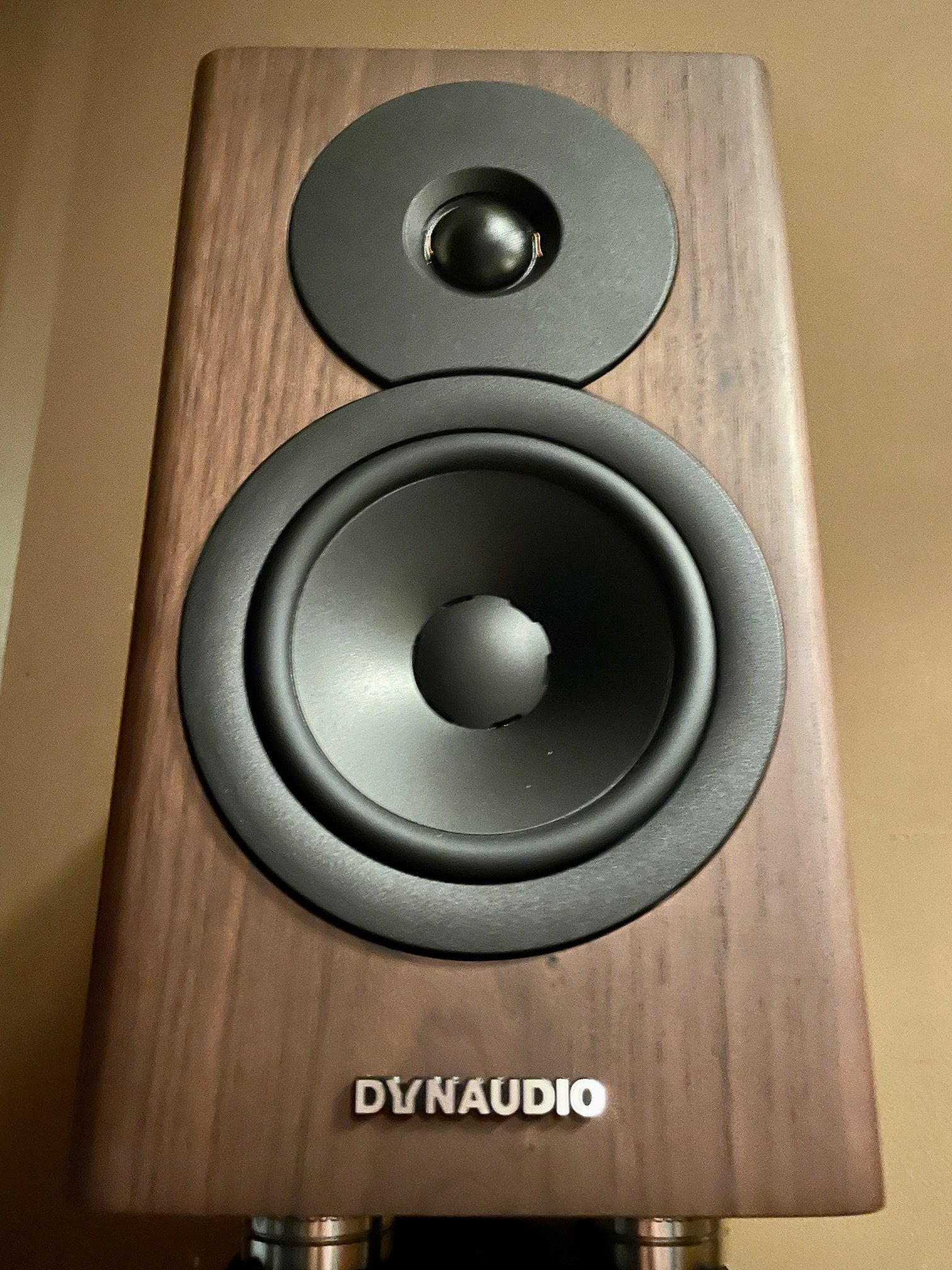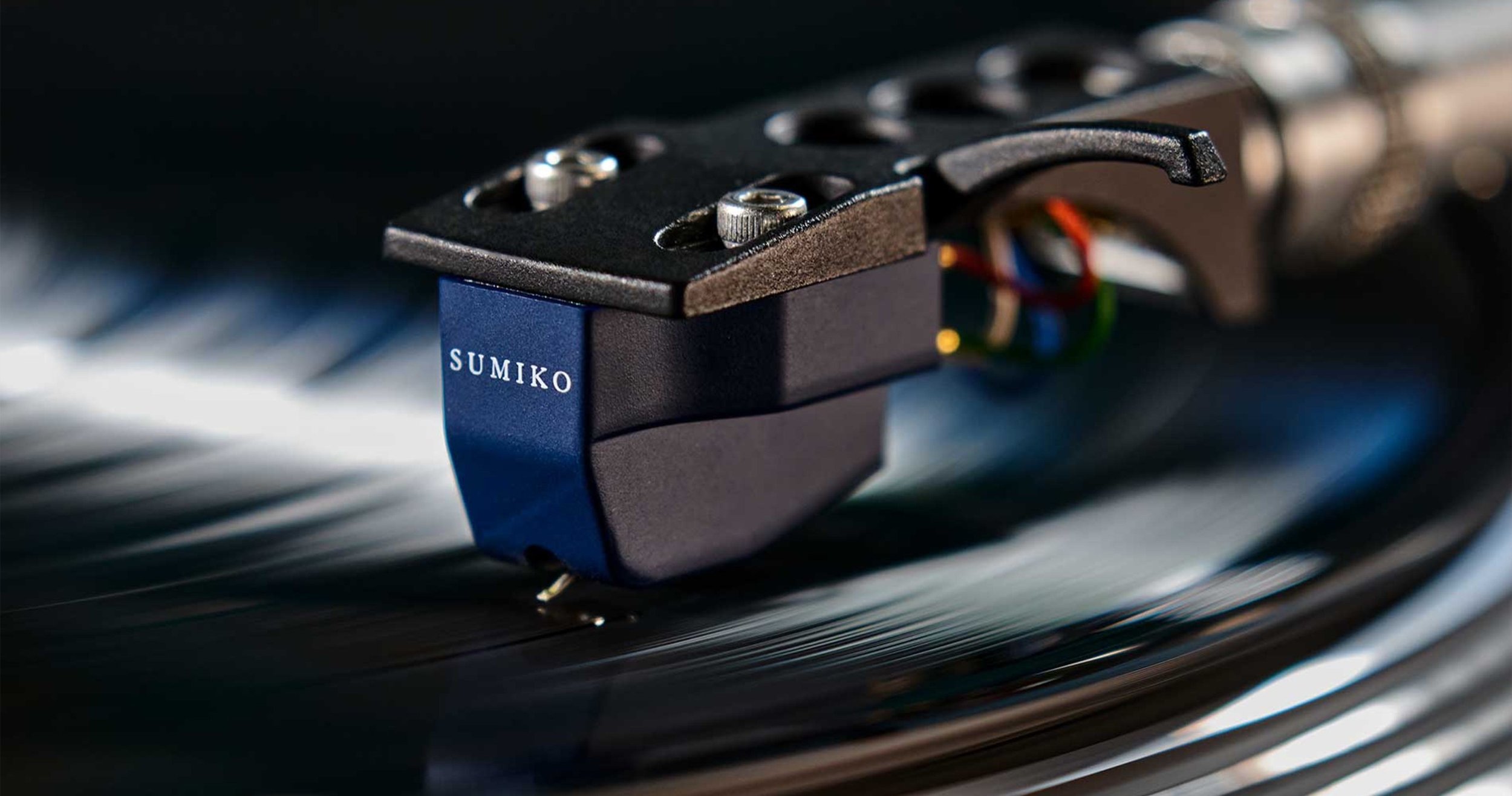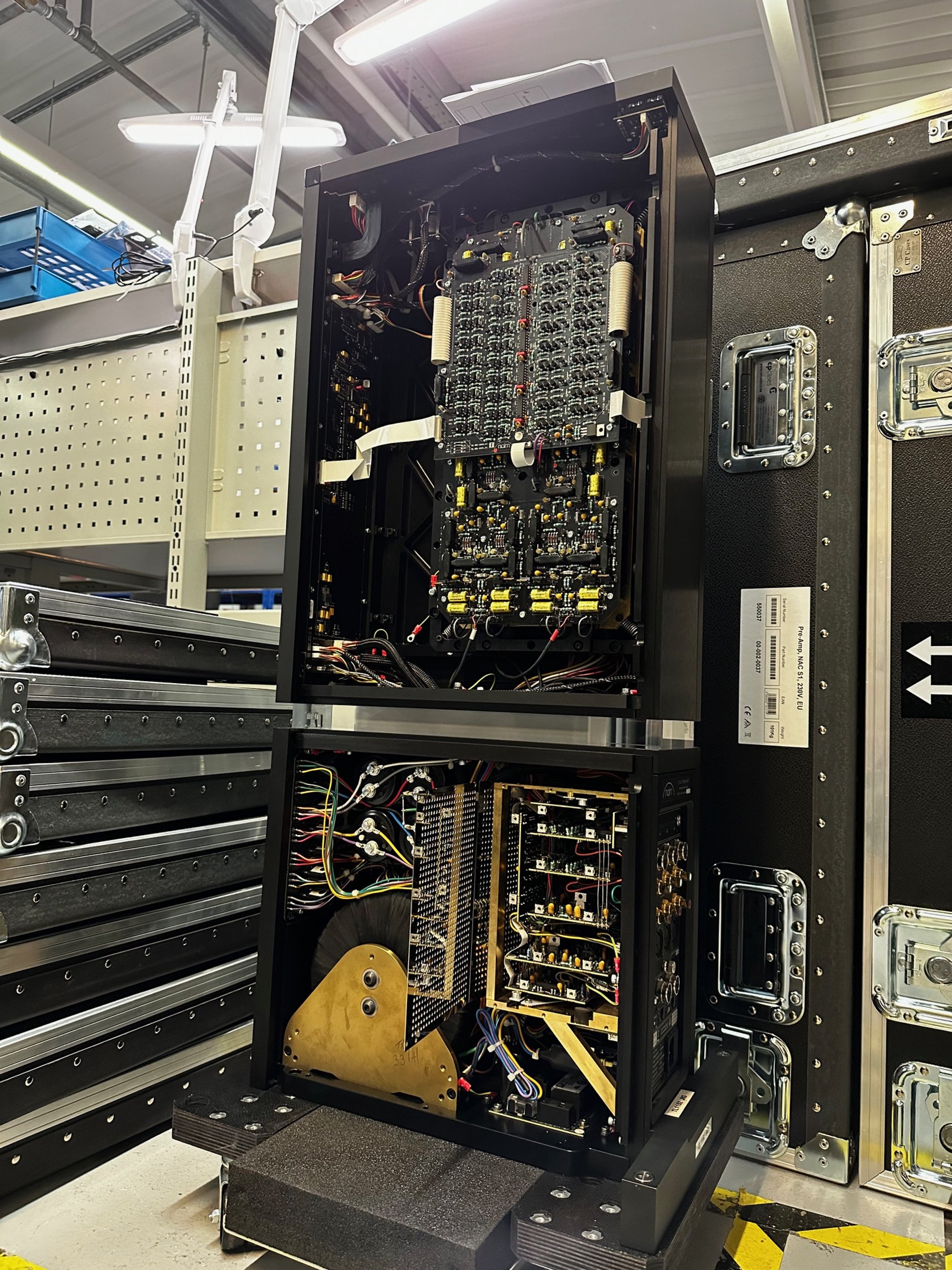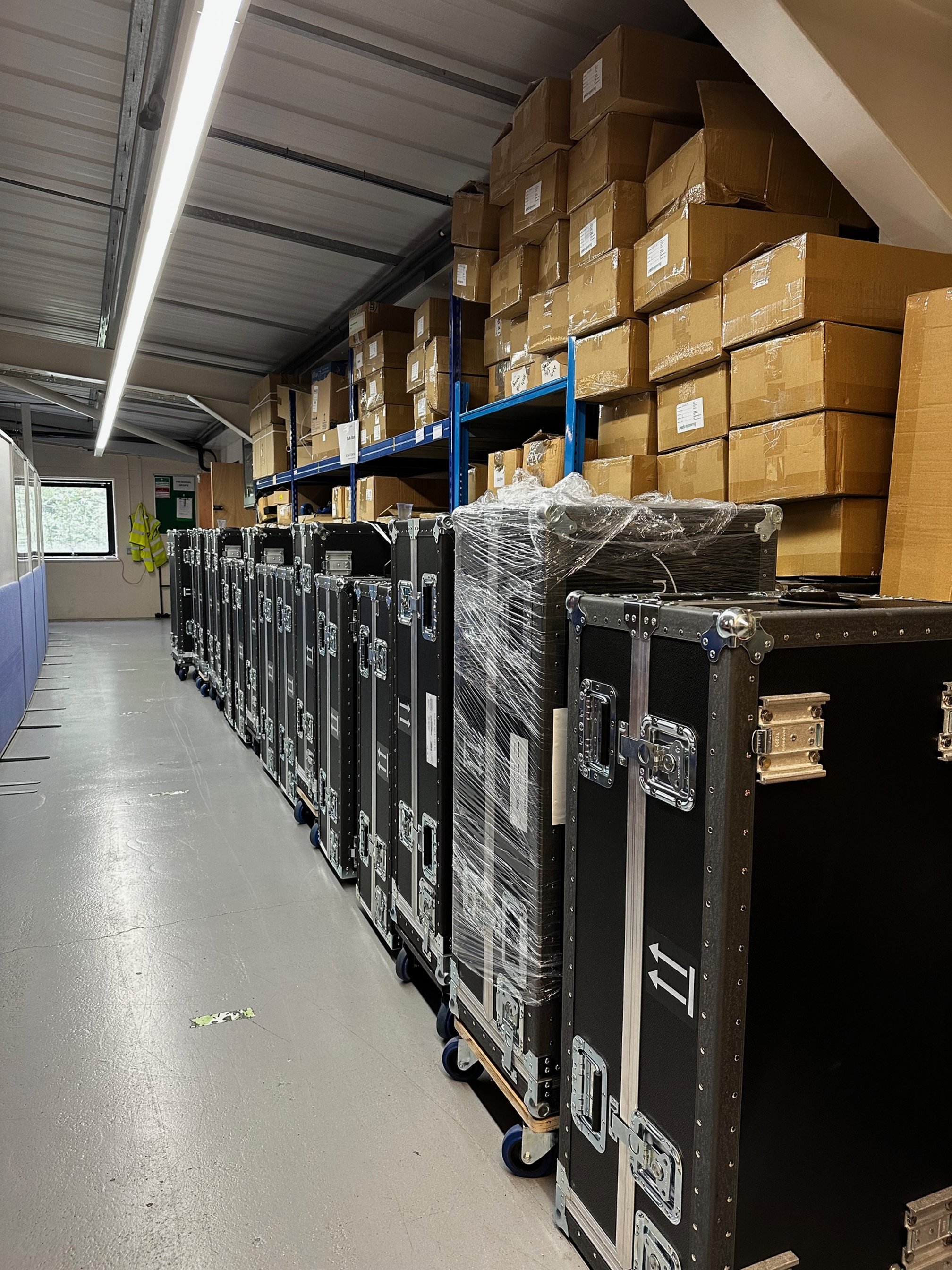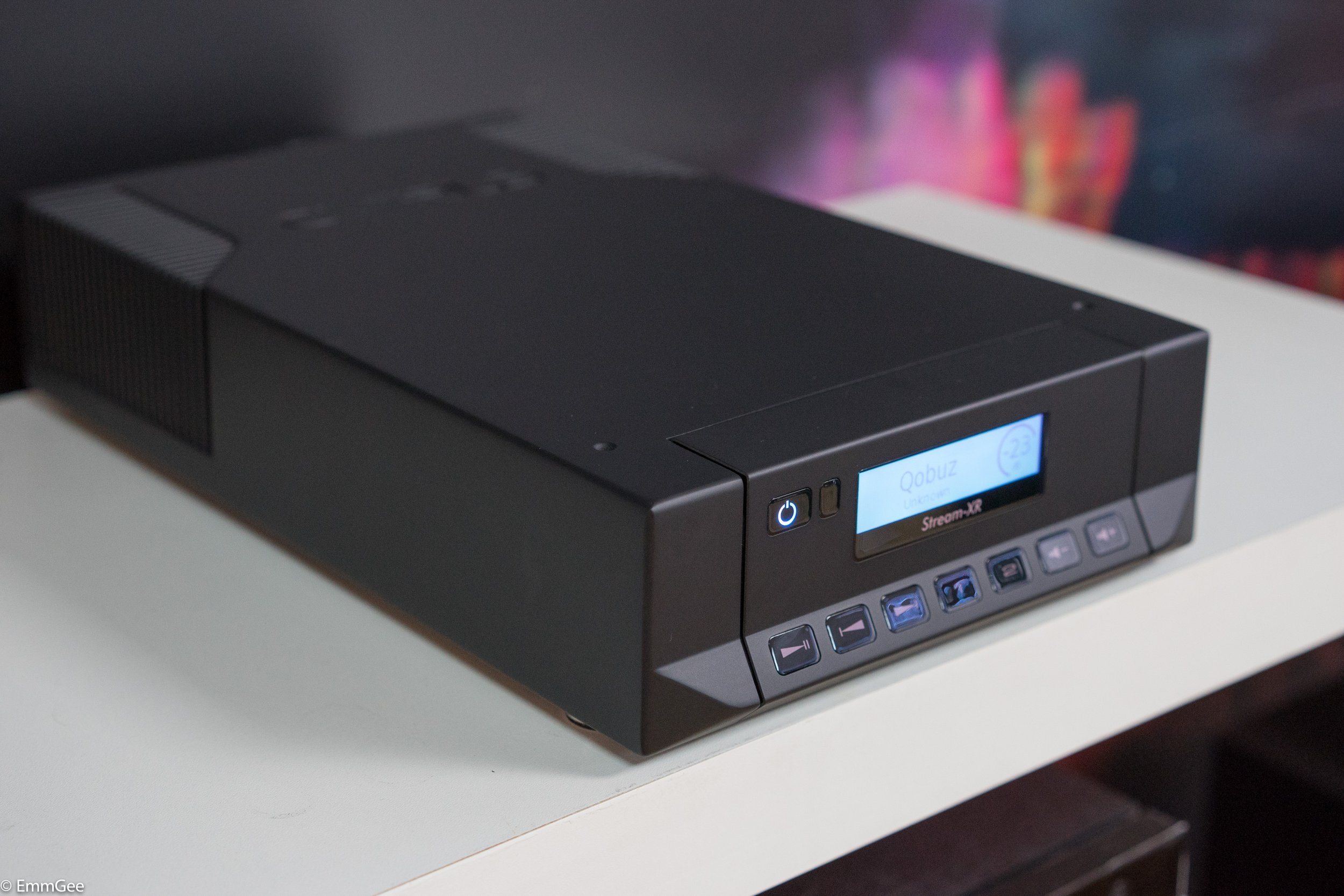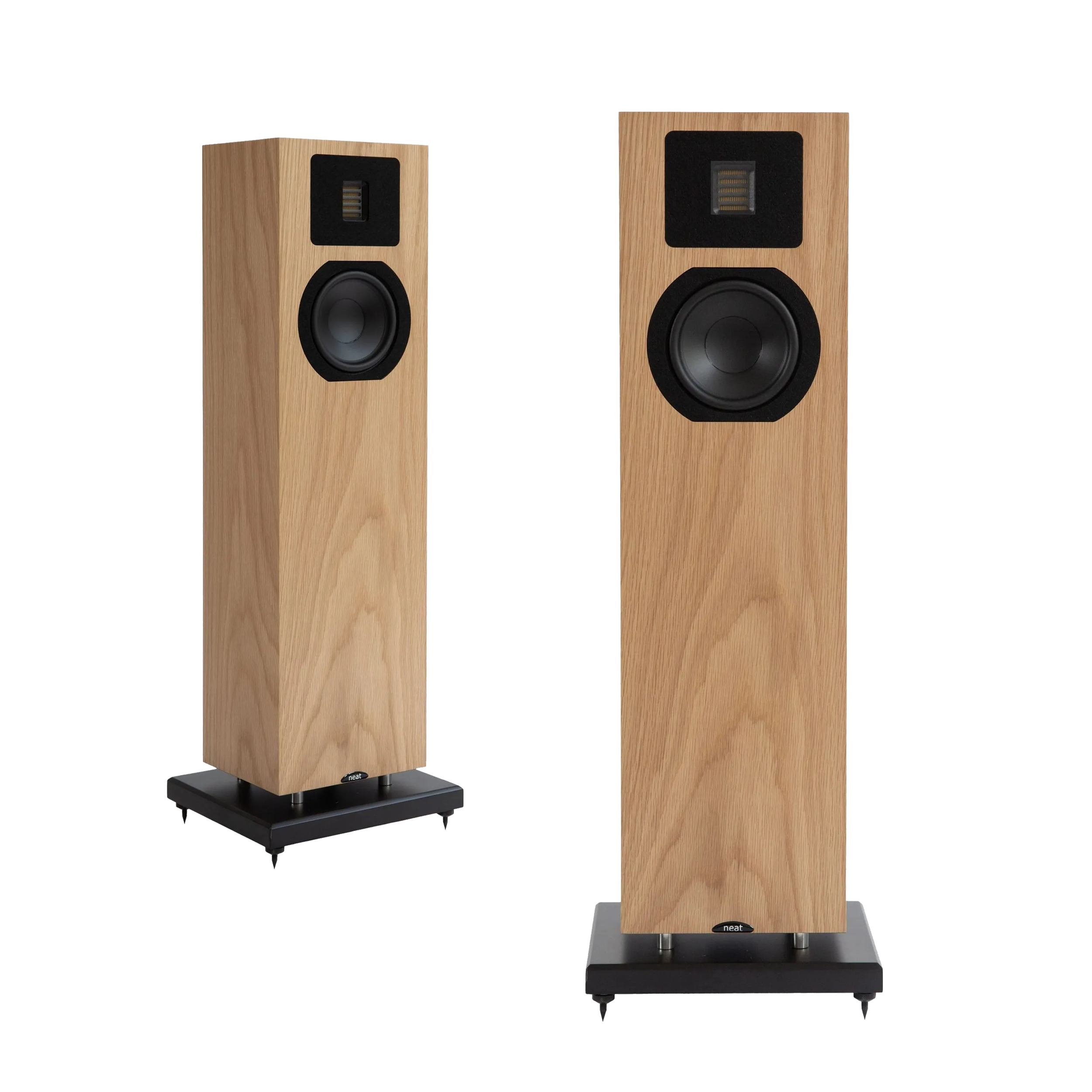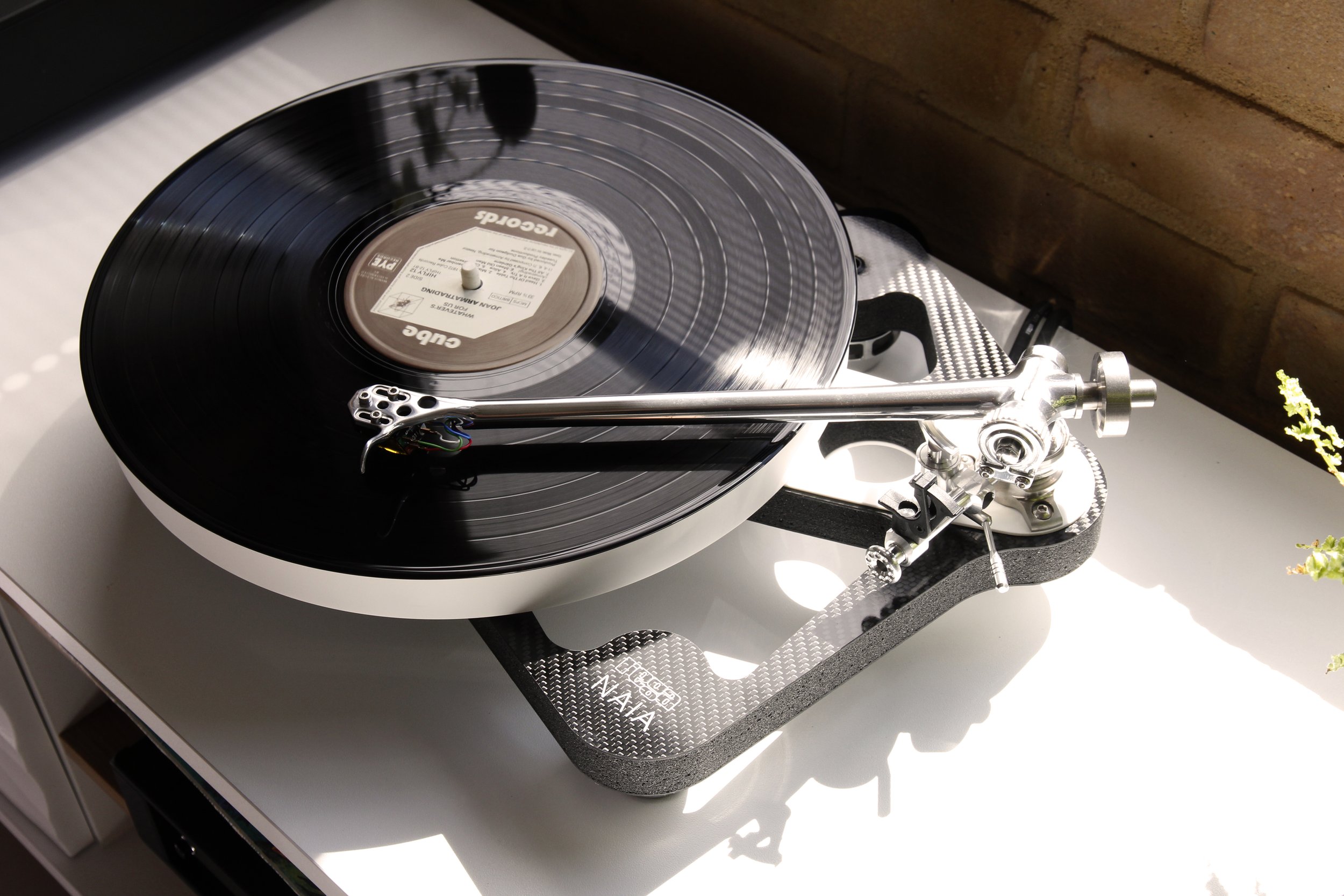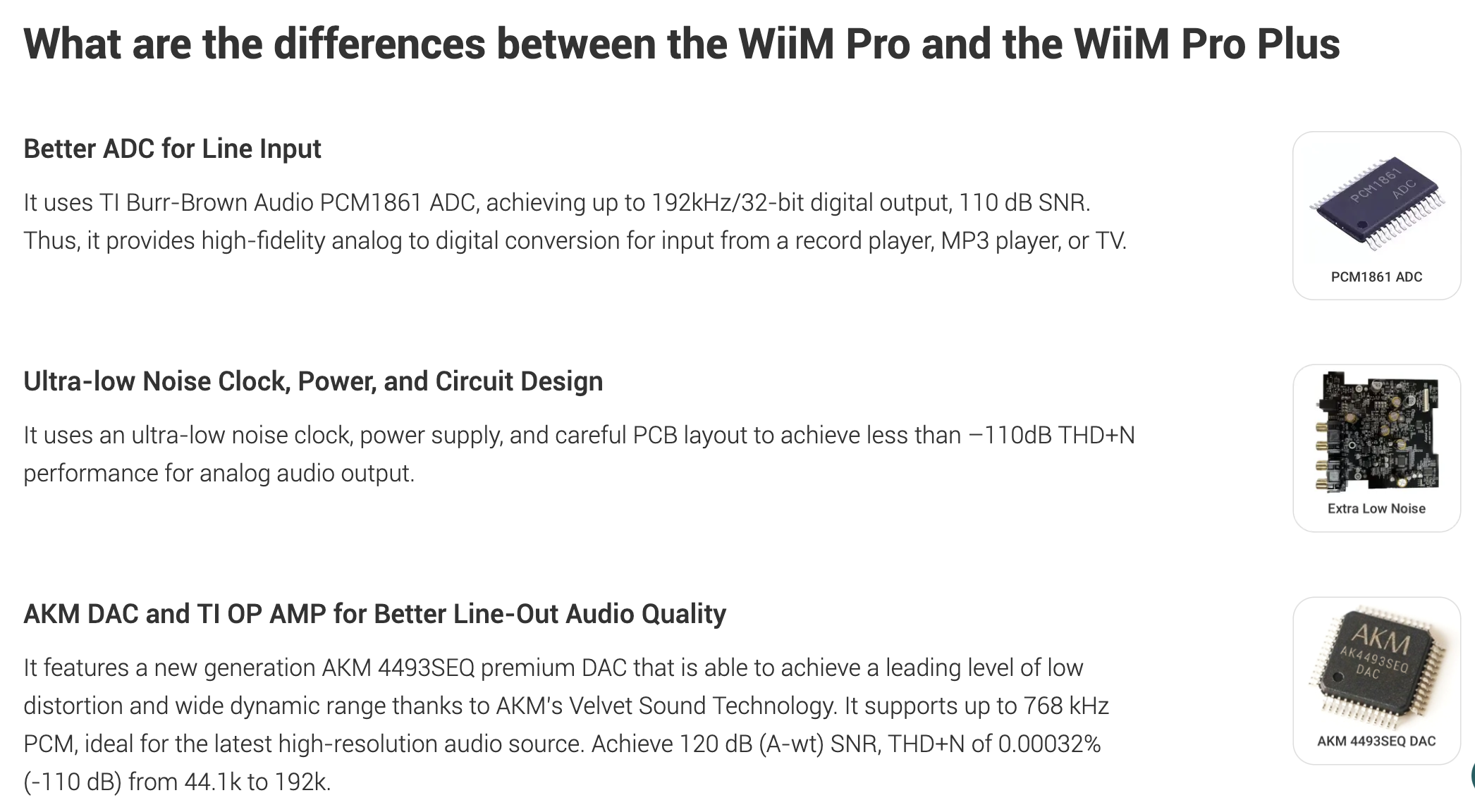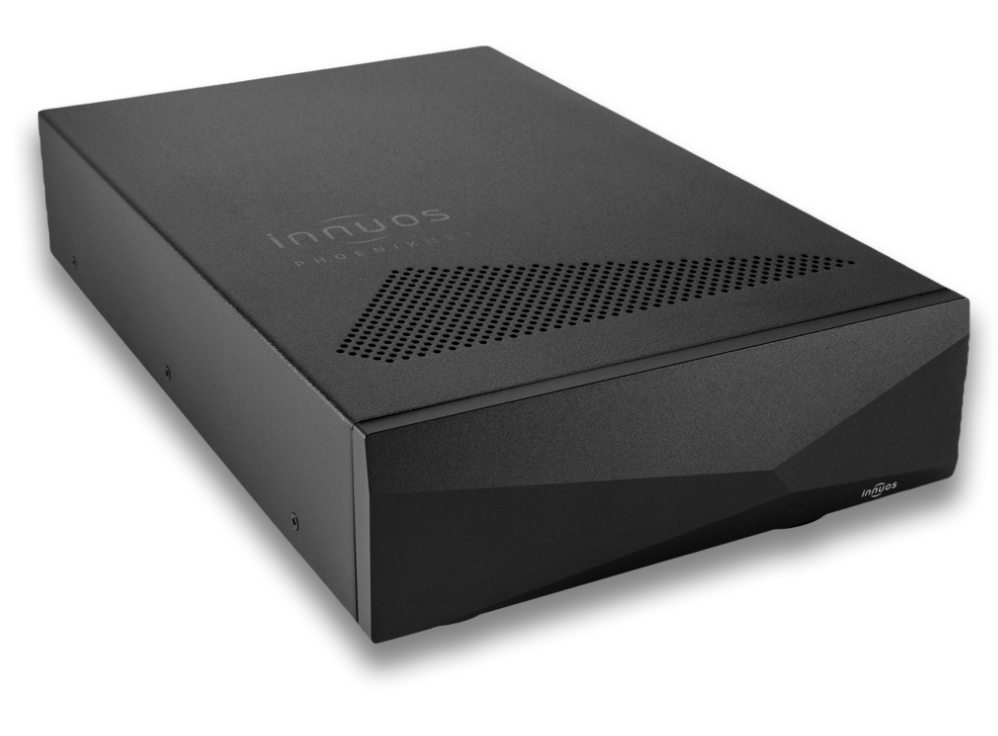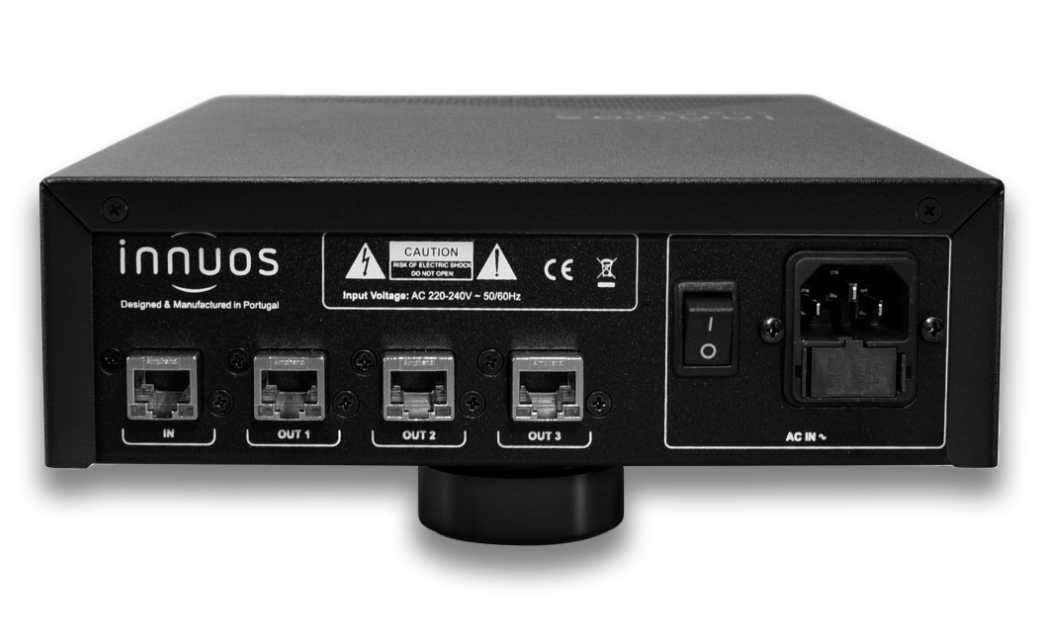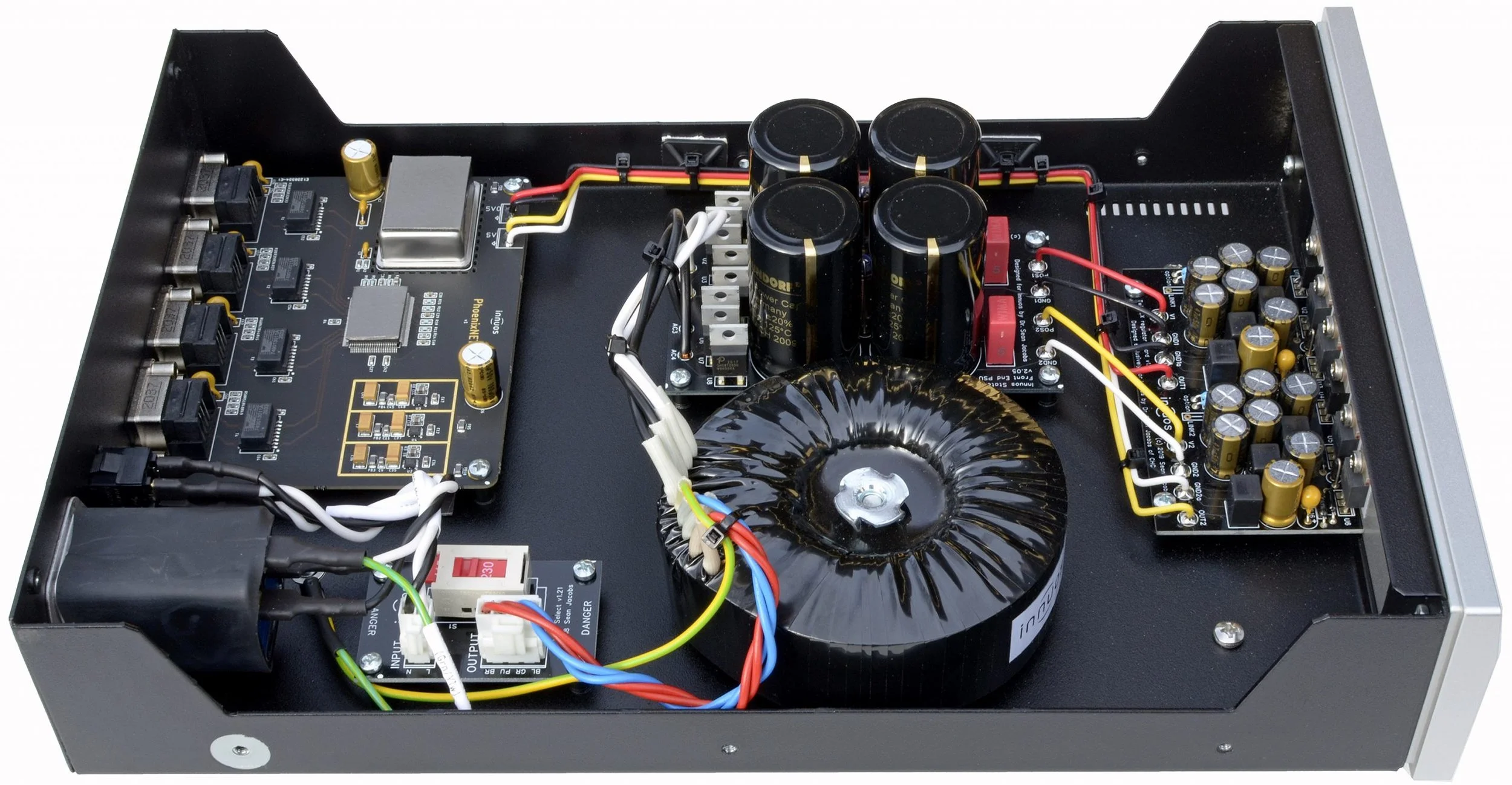The Audio Note (UK) TT - Two Deluxe Turntable now at Audio T Oxford
/Engineering for musical excellence
Audio Note (UK) is best known for its extensive range of valve amplifiers and digital products, but it has also been producing turntables and vinyl accessories for many years. The current range consists of three turntables, three tonearms and a range of moving-magnet and moving-coil cartridges.
The TT2 Deluxe showing its two SYNCHRONISED motors, seen through the ACRYLIC platter
Featured here is the middle of the range TT- Two Deluxe version (available with a selection of real wood veneers), Arm Three/11 and IQI moving-magnet cartridge, supported by the optional TTOne/Two power supply.
Plinth
The unit is a full plinth-type design with a high-quality aluminium sub-chassis with optimised three-point suspension geometry. Where the TT-Two Deluxe differs from many other record decks is in the use of a pair of AC motors to spin the acrylic platter, instead of one. The two opposed AC motors offer twice the torque to the low-mass acrylic platter and also have the benefit of further stabilising the suspension. This is a difficult engineering process because if there is any variation in the motors, instead of improving playback, they will cause oscillation. So, Audio Note pair-match every set of motors to ensure that they behave exactly the same, whilst paying equally close attention to the chassis design, ensuring that the two work in harmony.
Tonearm
The Arm Three/II is situated at the top of the Audio Note range and is a very solid and easy-to-set up tonearm, specifically designed by Audio Note. The tonearm cable is UK–Silver Litz inside the tube and AN-Vx silver from the base to the AN GP RCA plugs. The arm itself is machined from a solid aluminium billet, tapered. The arm’s bearing design is described as “captured unipivot” due to its unique vertical and horizontal bearings. This 9″ arm complies with the original Rega arm board configuration, which makes it a compelling potential choice for turntables from other brands.
The excellent Arm three/11 with iq1 mm cartridge
Cartridge
The IQ1 cartridge is part of Audio Note’s moving-magnet range and is essentially an uprated Goldring design that uses higher-quality copper coils and a diamond stylus to obtain a much-improved performance over the stock model. Audio Note phono stages are generally moving-magnet designs, and the IQ series precludes the need for an external step-up transformer to obtain the required levels of gain.
High standard
The TT-Two Deluxe has an excellent overall finish and is of a very high standard. The TT-Two is not an especially heavy design, but its construction and attention to detail is outstanding. The unit is also supplied with a Perspex lid, which is a welcome addition.
On start up the TT-Two is impressively quiet. The Arm 3 cueing action and the general arm movement suggests that the engineering is excellent. Altogether, jewel like engineering precision and this shows when playing a record.
The magic starts
As soons as you put on your favourite record, the TT-Two immediately makes a very persuasive case for itself. The first impression is of an extremely low-noise floor. There is almost no background noise at any volume level and no hum whatsoever. The two motors allow the platter to spin up to speed almost instantly and pitch stability is rock solid.
Sonically, the TT-Two is a muscular and powerful performer. It manages to sound effortless across a wide variety of music and is possessed of excellent pace and timing. Fast paced recordings are delivered with real urgency, underpinned with a tight and potent bass that has shape, insight and just the right amount of depth. Music sounds full, natural and layered – dynamically it starts and stops with a real poise that underpins the performance, no doubt helped by the twin matched motors.
Audio Note has developed a unique skill set, based on the approach that the equipment should serve the music – here it shows, where voices sound very real and musical instruments sound more like live instruments. The combination of deck, arm, cartridge, and power supply combine to give an open sound with accurate tonality and startling acuity.
You get absolutely all the music in both a technical and emotional sense, to totally backup Audio Note’s banner statement “Music’s Finest Conductor”.
Summary
The TT-Two Deluxe is a truly fine turntable and one that impressed us considerably. It sounds outstanding an all Audio Note system and yet it will also work equally well outside of this.
An exceptional way to take a deep dive into your record collection and a considerable temptation to buy more vinyl!
However, these are just words… Audio Note systems really deserve to be heard and experienced. Why not hear it for yourself and contact us in Oxford to arrange a demonstration?
Thanks for reading.
Rob & Jon - Audio T Oxford
If you have any questions about any of the equipment featured in this article, or any other Hi-Fi or home cinema enquiries, be sure to Contact Us.
If you’ve enjoyed this, why not go ahead and read some more of our other blogs, and be sure to follow us on our social media channels below…
Audio Note can be found at the following Audio T stores:












